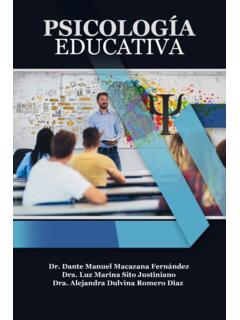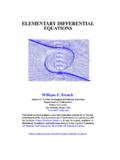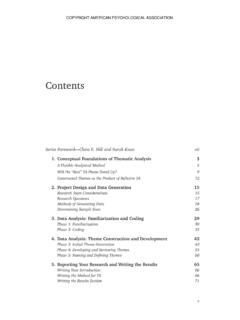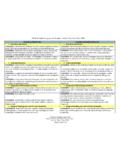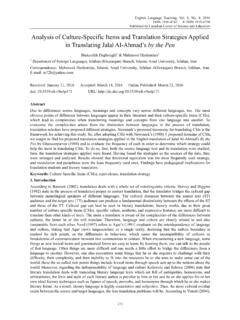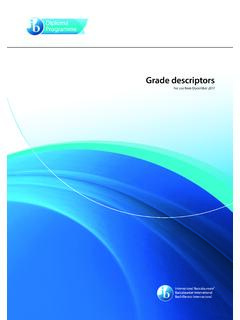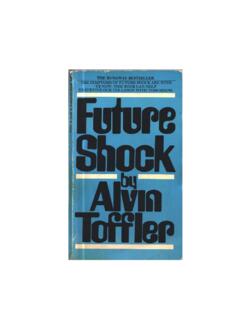Transcription of VEDIC MATHEMATICS - University of New Mexico
1 1 VEDIC MATHEMATICS - VEDIC OR MATHEMATICS : A FUZZY & NEUTROSOPHIC analysis W. B. Vasantha Kandasamy e-mail: web: ~wbv Florentin Smarandache e-mail: AUTOMATON Los Angeles 2006 This book can be ordered in a paper bound reprint from: Books on Demand ProQuest Information & Learning ( University of Microfilm International) 300 N. Zeeb Road Box 1346, Ann Arbor MI 48106-1346, USA Tel.: 1-800-521-0600 (Customer Service) This book has been peer reviewed and recommended for publication by: Prof. Zhang Wenpeng, Department of MATHEMATICS , Northwest University , Xi an, Shaanxi, Prof. Ion Goian, Department of Algebra, Number Theory and Logic, State University of Kishinev, R. Moldova. Dr. Albena Tchamova, Bulgarian Academy of Sciences, Sofia, Bulgaria. Copyright 2006 by Automaton, W. B. Vasantha Kandasamy and Florentin Smarandache Legal Jurisdictions: Chennai Courts only Cover Design and Layout by Kama Kandasamy Many books can be downloaded from the following Digital Library of Science: ~ : 1-59973-004-9 Standard Address Number: 297-5092 Printed in the United States of America 3 CONTENTS Preface 5 Chapter One INTRODUCTION TO VEDIC MATHEMATICS 9 Chapter Two analysis OF VEDIC MATHEMATICS BY MATHEMATICIANS AND OTHERS 31 Views of Prof.
2 About VEDIC MATHEMATICS from Frontline 33 Neither VEDIC Nor MATHEMATICS 50 Views about the Book in Favour and Against 55 Vedas: Repositories of Ancient Indian Lore 58 A Rational Approach to Study Ancient Literature 59 Shanghai Rankings and Indian Universities 60 Conclusions derived on VEDIC MATHEMATICS and the Calculations of Guru Tirthaji - Secrets of Ancient Maths 61 Chapter Three INTRODUCTION TO BASIC CONCEPTS AND A NEW FUZZY MODEL 65 Introduction to FCM and the Working of this Model 65 Definition and Illustration of Fuzzy Relational Maps (FRMS) 72 Definition of the New Fuzzy Dynamical System 77 Neutrosophic Cognitive Maps with Examples 78 Description of Neutrosophic Relational Maps 87 Description of the new Fuzzy Neutrosophic model 92 Chapter Four MATHEMATICAL analysis OF THE VIEWS ABOUT VEDIC MATHEMATICS USING FUZZY MODELS 95 Views of students about the use of VEDIC MATHEMATICS in their curriculum 97 Teachers views on VEDIC MATHEMATICS and its overall influence on the Students Community 101 Views of Parents about VEDIC MATHEMATICS 109 Views of Educationalists about VEDIC MATHEMATICS 114 Views of the Public about VEDIC MATHEMATICS 122 Chapter Five OBSERVATIONS 165 Students Views 165 Views of Teachers 169 Views of Parents 180 Views of the Educated 182 Observations from the Views of the Public 193 REFERENCE
3 197 INDEX 215 ABOUT THE AUTHORS 220 5 PREFACE Religious extremism has been the root cause of most of the world problems since time immemorial. It has decided the fates of men and nations. In a vast nation like India, the imposition of religious dogma and discrimination upon the people has taken place after the upsurge of Hindu rightwing forces in the political arena. As a consequence of their political ascendancy in the northern states of India, they started to rewrite school textbooks in an extremely biased manner that was fundamentalist and revivalist. Not only did they meddle with subjects like history (which was their main area of operation), but they also imposed their religious agenda on the science subjects. There was a plan to introduce VEDIC Astrology in the school syllabus across the nation, which was dropped after a major hue and cry from secular intellectuals.
4 This obsession with VEDIC results from the fundamentalist Hindu organizations need to claim their identity as Aryan (and hence of Caucasian origin) and hence superior to the rest of the native inhabitants of India. The Vedas are considered divine in origin and are assumed to be direct revelations from God. The whole corpus of VEDIC literature is in Sanskrit. The Vedas are four in number: Rgveda, Saamaveda, Yajurveda and Atharvaveda. In traditional Hinduism, the Vedas as a body of knowledge were to be learnt only by the upper caste Hindus and the lower castes (Sudras) and so-called untouchables (who were outside the Hindu social order) were forbidden from learning or even hearing to their recitation. For several centuries, the Vedas were not written down but passed from generation to generation through oral transmission.
5 While religious significance is essential for maintaining Aryan supremacy and the caste system, the claims made about the Vedas were of the highest order of hyperbole. Murli Manohar Joshi, a senior Cabinet minister of the Bharatiya Janata Party (BJP) that ruled India from 1999-2004 went on to claim that a cure of the dreaded AIDS was available in the Vedas! In the 6continuing trend, last week a scientist has announced that NASA (of the USA) is using a VEDIC formula to produce electricity. One such popular topic of Hindutva imposition was VEDIC MATHEMATICS . Much of the hype about this topic is based on one single book authored by the Sankaracharya (the highest Hindu pontiff) Jagadguru Swami Sri Bharati Krsna Tirthaji Maharaja titled VEDIC MATHEMATICS and published in the year 1965, and reprinted several times since the 1990s [51].
6 This book was used as the foundation and the subject was systematically introduced in schools across India. It was introduced in the official curriculum in the school syllabus in the states of Uttar Pradesh and Madhya Pradesh. Further, schools run by Hindutva sympathizers or trusts introduced it into their curriculum. In this juncture, the first author of this book started working on this topic five years back, and has since met over 1000 persons from various walks of life and collected their opinion on VEDIC MATHEMATICS . This book is the result of those interactions. In this book the authors probe into VEDIC MATHEMATICS (a concept that gained renown in the period of the religious fanatic and revivalist Hindutva rule in India): and explore whether it is really VEDIC in origin or MATHEMATICS in content. The entire field of VEDIC MATHEMATICS is supposedly based on 16 one-to-three-word sutras (aphorisms) in Sanskrit, which they claim can solve all modern mathematical problems.
7 However, a careful perusal of the General Editor s note in this book gives away the basic fact that the origin of these sutras are not VEDIC at all. The book s General Editor, Agrawala, ( , PhD. ,) writes in page VI as follows: It is the whole essence of his assessment of VEDIC tradition that it is not to be approached from a factual standpoint but from the ideal standpoint viz., as the Vedas, as traditionally accepted in India as the repository of all knowledge, should be and not what they are in human possession. That approach entirely turns the table on all critics, for the authorship of VEDIC MATHEMATICS need not be labouriously searched for in the texts as preserved from antiquity. [..] 7In the light of the above definition and approach must be understood the author s statement that the sixteen sutras on which the present volume is based from part of a Parisista of the Atharvaveda.
8 We are aware that each Veda has its subsidiary apocryphal text some of which remain in manuscripts and others have been printed but that formulation has not closed. For example, some Parisista of the Atharvaveda were edited by and J. Von Negelein, Leipzig,1909-10. But this work of Sri Sankaracharyaji deserves to be regarded as a new Parisista by itself and it is not surprising that the Sutras mentioned herein do not appear in the hitherto known Parisistas. A list of these main 16 Sutras and of their sub-sutras or corollaries is prefixed in the beginning of the text and the style of language also points to their discovery by Sri Swamiji himself. At any rate, it is needless to dwell longer on this point of origin since the vast merit of these rules should be a matter of discovery for each intelligent reader. Whatever is written here by the author stands on its own merits and is presented as such to the mathematical world.
9 [emphasis supplied] The argument that Vedas means all knowledge and hence the fallacy of claiming even 20th century inventions to belong to the Vedas clearly reveals that there is a hidden agenda in bestowing such an antiquity upon a subject of such a recent origin. There is an open admission that these sutras are the product of one man s imagination. Now it has become clear to us that the so-called VEDIC MATHEMATICS is not even VEDIC in origin. Next, we wanted to analyze the mathematical content and its ulterior motives using fuzzy analysis . We analyzed this problem using fuzzy models like Fuzzy Cognitive Maps (FCM), Fuzzy Relational Maps (FRM) and the newly constructed fuzzy dynamical system (and its Neutrosophic analogue) that can analyze multi-experts opinion at a time using a single model. The issue of VEDIC MATHEMATICS involves religious politics, caste supremacy, apart from elementary arithmetic so we 8cannot use simple statistics for our analysis .
10 Further any study, when scientifically carried out using fuzzy models has more value than a statistical approach to the same. We used linguistic questionnaires for our data collection; experts filled in these questionnaires. In many cases, we also recorded our interviews with the experts in case they did not possess the technical knowledge of working with our questionnaire. Apart from this, several group discussions and meetings with various groups of people were held to construct the fuzzy models used to analyze this problem. This book has five chapters. In Chapter I, we give a brief description of the sixteen sutras invented by the Swamiji. Chapter II gives the text of select articles about VEDIC MATHEMATICS that appeared in the media. Chapter III recalls some basic notions of some Fuzzy and Neutrosophic models used in this book.



